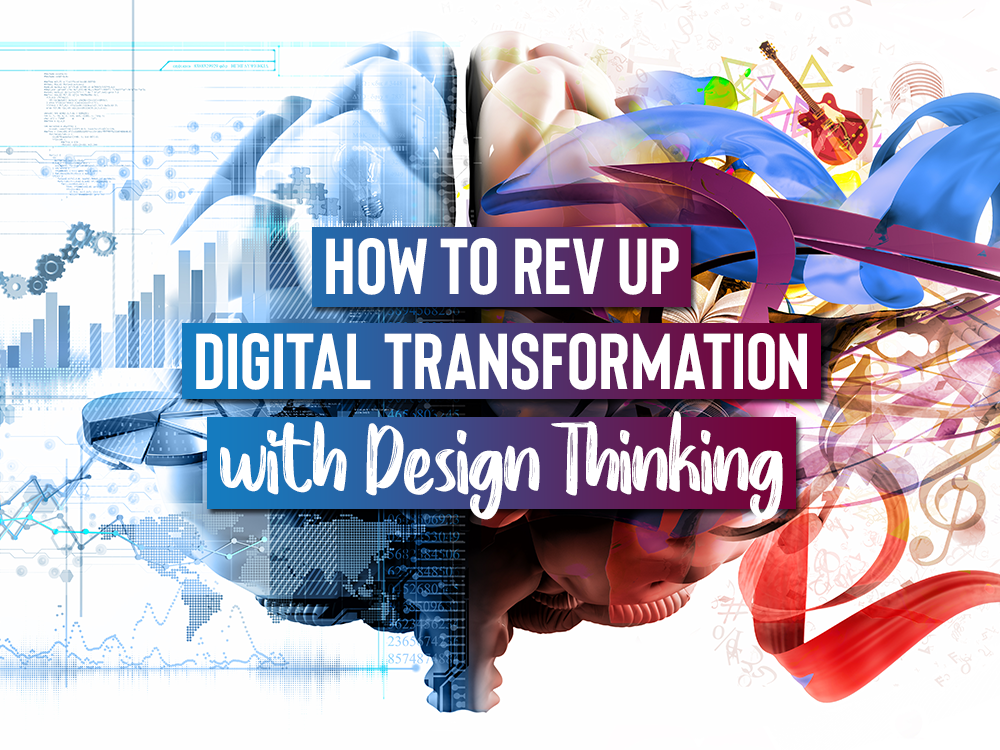Organizations must be agile in today’s world full of technological capabilities. Businesses must be innovative while integrating ever-changing digital technologies into their business practices in order to stay competitive. Because of this, having a digital transformation strategy is of utmost importance in any market.
Initially, the transition to digital is not easy as things tend to shift unpredictably and swiftly. Staying up to date can be challenging, leaving many feeling uncertain of how to move forward. This is where design thinking comes into play.
Design thinking is a user-centric, five-step design methodology that examines both present and future details of a problem while exploring alternate solutions rather than producing a solution up front. Design thinking is helpful when it comes to enhancing an organization’s digital transformation as it helps to tackle complex and undefined problems by use of a more flexible, fluid, hands-on approach that enables businesses to interact with consumers while coming up with solutions.
Design thinking is comprised of five steps, including empathize, define, ideate, prototype, and test.
Empathize
An important element in digital transformation is creating an optimal experience for the customer. In order to do this, it is important to be empathetic with the customer, seeking to understand their needs and motivations. In business, the problems we solve are usually not our own so we should not move forward by simply presuming we know our customer’s needs or responses.
Observe how customers interact with your product or service. Study click-stream data to see how they engage with your app or site. Check chat logs to see what they ask your customer service team. Interview your customers to find out what they want the digital experience to be like. Seek to understand where friction points are for your users so you can gather information necessary to truly solve their issues.
Define
The define stage helps problems to come to the surface so you can solve them. This stage offers insight that comes from the empathize stage and will help you pinpoint where you need to pinpoint your energy. During the define stage, you need to formulate a problem statement and break it down into steps so it is not overwhelming.
Ideate
Once you have a problem that has been defined, it is time to begin generating ideas on how to fix the problem. This is the brainstorming phase where you should bring together collective minds in a group to develop many creative ideas. This phase should be quick and creative as well as collaborative.
Prototype
During the prototype stage, the team experiments with a number of inexpensive and simple models that are aimed to test and validate your solution ideas in a time sensitive way. Prototypes should be tested on a small number of users with either usability testing or a small selection of visitors to your site.
Take note of how users interact with the prototype and collect feedback to use to adjust and optimize your next model. This should be a fast phase that offers quick and efficient improvements. Once this phase ends, you should have a much better idea of what works best and how your customers truly think and feel when using your product or service.
Test
Continual testing of your prototypes is the best way to improve on a regular basis. Capture information needed to go back through the design thinking process by taking note of interaction with customers with an end goal of enhancing customer experience.
Design thinking methodology is one of the best ways to tackle problems in this world of ever-evolving digital transformation.

